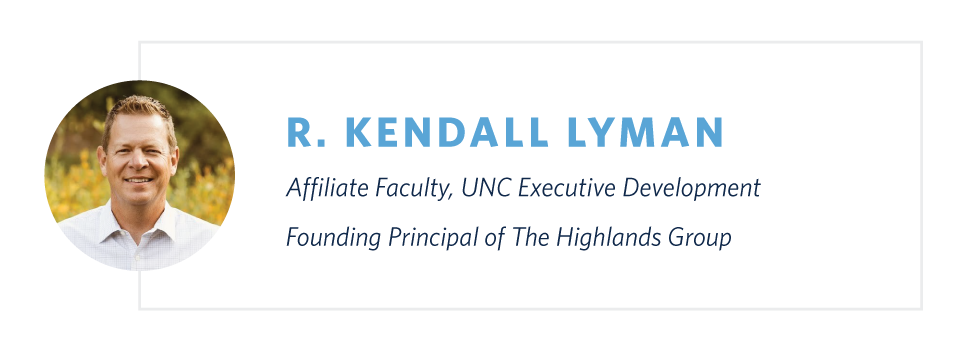Thought Leadership
Change the Way You Listen: Why Leaders Should Stop Hearing and Start Listening

Is how you listen helping or hurting your leadership? A LinkedIn survey of nearly 14,000 employees around the world found that only 8% of employees reported that their mid- and senior-level leaders are practicing listening “very well.” Why? There are a lot of reasons. In one study conducted with 2,250 adults, Harvard psychologists Matthew Killingsworth and Daniel Gilbert found that we spend around 47 percent of every waking hour “mind wandering.” But the biggest factor that I have seen surface over and over with mid- and senior-level leaders is how they listen. When you listen, do you interrupt, listen to respond, listen to solve, or wait for the other person to stop talking so that you can share? Do you listen only to what is being said versus the underlying emotion? Do you believe that listening equals agreement, so you prepare your rebuttal while the other person is talking? Are you efficient with people and move them along and try to get them to solution quickly?
In contrast, great listeners work to connect and listen to understand instead of respond and solve. They validate others and show that what people say matters to them. They are curious and “seek to understand” rather than taking over the conversation. One of my favorite quotes underscores how to listen well:
“Hearing does not equal listening. We hear background noise all the time and pay it little heed. But when we really listen, we are working to connect with someone else. Great listening is like being a human satellite dish where we receive information and decode it. We take in sights, sounds, body language, and other signals to ensure connection. Our ability to receive other people’s signs and translate them correctly is our goal. When we are disconnected, it is because we have escaped into the recesses of our own mind, we are listening to respond, we are distracted or our attention span is low, we are dialed out, we are not receiving, and the channels will not connect.” — Tim Sanders
By the Numbers
Most speakers average 150-175 words per minute while most listeners can consume 400-500 words per minute. Distracted leaders allow their excess brain capacity to dialogue internally about the conversation and miss meaning by relying only on the words spoken (which account for only seven percent of communication). Great listeners, on the other hand, focus their brain on what is being said, what is not being said, and the feeling communicated through tone (35%) and body language (55%). These leaders listen like a human satellite dish and take in the “sights, sounds, and other signals to ensure connection…and translate them correctly.”
Red Light, Yellow Light, Green Light
A simple metaphor that I have used with leaders to improve listening is a traffic stoplight. Obviously, red light means stop and green light means go. But many drivers misinterpret a yellow light and tend to speed up and rush through an intersection instead of slowing down and proceeding with caution. The same rules apply in our communications. When we attempt to reflect back in a conversation what we heard and get a response of “No” or “Not really…that is not the issue,” that is a red light. Translation? Stop. Pause. Listen more empathically. You have missed the essence of the message. Read their body language. What emotions (anger, happiness, sadness) can you pick up on? Or, if in the course of the conversation, you try to clarify to ensure understanding and the other person responds by saying a “Well…” or “Kind of, but not really?” that is a yellow light. You are close but not there yet. Slow down. Engage more. Get curious. Work to decode and translate meaning. Only when the other person says “Yes!” to your restating of what they are experiencing have you received a green light and can continue to the next intersection on the road to understanding.

Flexing a Few Behaviors
To become skillful in the art of dialogue and empathic listening, leaders can flex just a few behaviors. Here are some “training wheel” phrases that will help develop better listening skills.
- Reflect on what is being said
- “You think that __________ (it is all your fault, it is over).”
- “You look _____________ (upset, angry, pleased).
- “You sound ____________ (confused, shocked, concerned).”
- “You feel ____________ (worried, excited, relieved).”
- Clarify to ensure understanding
- “Tell me more about ___________.”
- “For you, the issue is __________.”
- “What else?”
- Reframe/Restate what the speaker both said and feels
- “For you, the bottom line is ___________.”
- “Your dilemma is ___________.”
- “You are not sure what to do about ___________.”
The Art of Listening
When I ask clients “What is hard about listening like this?” they usually say things like “Concentration,” “It is hard not to interject,” or “I want to give advice.” Listening empathically is a muscle that has to be developed. When I ask employees “What is it like being listened to this way?” they often say “Refreshing,” “Liberating,” or “It is like having oxygen in the conversation.” Just for fun, see how well you listen by watching the video clip “It’s Not About the Nail!” If the clip reminds you about a recent conversation you have had, it might be time to put your training wheels back on and practice the art of dialogue and empathic listening.
SOURCES:
Jacob Morgan: “Research Shows Only 8% Of Leaders Are Great Listeners And Communicators.”
Inc.: “Harvard Psychologists Reveal the Real Reason We’re All So Distracted”
Adapted from Tim Sanders, The Likeabilty Factor
